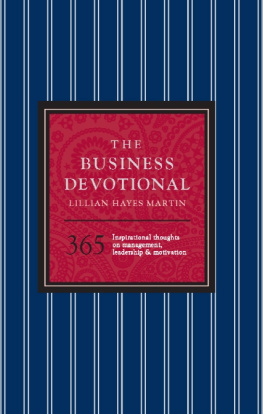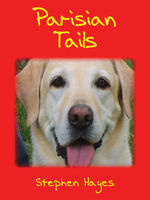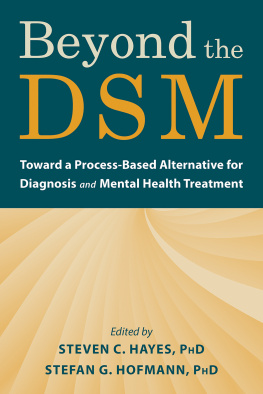Martin Hayes
SHARED NOTES
A Musical Journey

TRANSWORLD
UK | USA | Canada | Ireland | Australia
New Zealand | India | South Africa
Transworld is part of the Penguin Random House group of companies whose addresses can be found at global.penguinrandomhouse.com.

First published in the UK and Ireland in 2021
by Transworld Ireland
Copyright Martin Hayes 2021
The moral right of the author has been asserted
Cover design: Marco Kindler von Knobloch, multipleStudio
Cover photograph: Rafael Garca Snchez, multipleStudio
Every effort has been made to obtain the necessary permissions with reference to copyright material, both illustrative and quoted. We apologize for any omissions in this respect and will be pleased to make the appropriate acknowledgements in any future edition.
ISBN: 978-1-473-59040-3
This ebook is copyright material and must not be copied, reproduced, transferred, distributed, leased, licensed or publicly performed or used in any way except as specifically permitted in writing by the publishers, as allowed under the terms and conditions under which it was purchased or as strictly permitted by applicable copyright law. Any unauthorized distribution or use of this text may be a direct infringement of the authors and publishers rights and those responsible may be liable in law accordingly.
To Lina
Description of a traditional folk melody
In their small way, they are perfect as the grandest masterpieces of musical art. They are, indeed, classical models of the way in which a musical idea can be expressed in all its freshness and shapeliness in short, in the very best possible way, in the briefest possible form and with the simplest of means.
Bla Bartk, The Hungarian Folk Song
Preface
W HEN, DURING THE early stage of my relationship with my wife, Lina, I started to talk about marriage, she said to me, But I dont know who you are! Knowing she was a big fan of my music, I said to her, Do you like my music? She said she loved it, to which I replied, Well, thats all I am: music.
Traditional Irish music has been my life. I am deeply passionate about it and am always happy to talk about it. I enjoy conveying musical ideas in master classes and media interviews. Some musicians prefer not to talk about music at all, which is entirely understandable the music itself can surely do the talking. I, however, love to think and talk about music, and though Ive spent my life playing it, there is still much of it that remains a mystery to me. I never tire of trying to understand more deeply the act of making music or the very nature of the creative process itself.
When invited to write this book, I willingly embraced the idea, thinking that I might be able to convey my thoughts on music in greater and more precise detail. My initial efforts at documenting my thoughts, purely on music alone, proved difficult without context. My musical understanding and reasoning are inextricably interwoven with my personal story and journey. I had initially resisted the idea of writing a memoir, believing that maybe my life story wasnt in itself very interesting. My personal life, with all its twists and turns, however, has always been a musical story, so I eventually agreed with my publisher that a memoir was the best way to take you inside my world of music.
When I started this book, I had no real writing experience, having written little more than emails or set lists since my school days. While I was trying to figure out what shape this book might take, Lina happened to be taking an online course on autobiographical writing. She shared her insights with me, making me aware that there is an obligation towards the reader in terms of trust and honesty. I have always strived to honestly express my thoughts on music and my artistic journey. Accepting the necessity of a memoir format to convey musical ideas, however, pushed me towards telling stories of my life that are not necessarily secret but arent widely known either. Some of these stories are a bit embarrassing to me, but without them the picture is incomplete.
There was a period of my life where I was more lost, foolish and silly than I ever thought Id admit. My current public persona, as a professional musician in mid-career, reflects a more thoughtful and insightful person than the one I was during my years in the wilderness. Nonetheless, my career success, though modest by many standards, has still been highly improbable.
I was born into a rich music culture and a rural way of life that was about to change massively. Through the early sixties and seventies, my little part of East Clare went through massive cultural and social change. However, the musical ethos of another time still prevailed and is the foundation of my musical understanding. The environment into which I was born provided me with a cultural context rich enough in source material and inspiration to last me a lifetime. This book traces a musical thread and a life story that goes all the way from my beginnings, on a small farm with horse-drawn machinery, with a father who played the fiddle and a one-room schoolhouse, to a life of musical performance and collaboration on stages all over the world.
Traditional Irish music which I will refer to simply as traditional music for the rest of this book is an earthy music of deceptive simplicity that has a grounded beauty within its very DNA. Irish music is a treasury of melodic richness, and this is the story of how Ive experienced this music, whether by the rustic, open-hearth fireplace of my early childhood or, later, in the sacred space of the concert stage. Through all these times, there has been an abundance of support and help from people who have shared their wisdom and thoughts with me musicians who have lifted me to newer and higher levels, people who have believed in me, who have seen things in me I couldnt fully see myself and whose love and support has sustained me. I hope that this story can be an encouragement to those starting out in life to follow your bliss and know that even unlikely success and happiness can come to you if you are willing to follow the guidance of your heart.
Introduction
I N THE HAY shed, my father and I laid a doubled-up rope on the ground and started evenly piling some of last summers hay on top of it. When there was enough hay, we took the loose ends of the rope and pulled them over the pile of hay, running them through the loop at the other end. We pulled the rope tight to make a compact bunch of hay that could be swung over my fathers back. We then made a smaller one for me. Once the beart of hay was on his back, I pulled off the loose sops of hay that were hanging from his beart before he took off across the meadow to feed the cattle. I then swung my smaller beart over my back and went along with him. As we were walking towards the middle hill, where the cattle were, my father asked me to whistle for him. He wanted to know if I knew the tune we had worked on a few nights before. Was the tune inside me? Was it now part of me? If it wasnt in me, it didnt matter whether I could technically play it on the fiddle or not.
Tunes live in my memory as remembered patterns; they live in my body also, as if theyve become part of my physical being. When playing, they move through me, manifesting themselves through the instrument as the final act of music-making. All the experiences of nature, the farm, the landscape, the folklore, my imagination and the memories of great moments of music have become entwined in the tunes. The deeper from within the tune comes, the more powerful it is.















